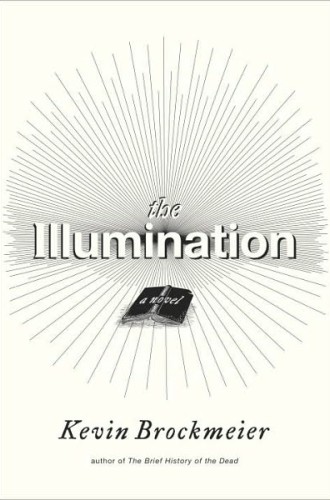The Illumination, by Kevin Brockmeier
In the opening pages of The Illumination, a woman cuts her finger with a knife and the wound emits a silvery light. At the hospital, she learns that this is happening all over the world—every site of injury, pain or sickness shines. A headache looks like a glowing orb, arthritic bones look like icy branches, a kidney stone is a ball of light barely visible underneath a shirt, open wounds are blinding.
The media call this event, when all the world's pain becomes permanently visible, the Illumination. At first a phenomenon, then cause for a media frenzy and hailed by some as a sign of the apocalypse, the glow quickly becomes the new normal. One might assume that the world would become more empathetic as a result of it, but if anything the characters in this novel become more insular.
Read our latest issue or browse back issues.
Brockmeier is known for including supernatural elements in his fiction (his previous books, The Brief History of the Dead and The View from the Seventh Layer, have introduced ghosts, aliens and dystopian futures) without making them the focus of the work. The Illumination exposes the immense vulnerability of people living in a world "whose rules had suddenly changed."
Carol Ann, the woman who cut her finger, meets a dying woman, Patty, at the hospital. For years, Patty's husband had left her a note every morning telling her one thing he loved about her—"I love the way chocolate makes your eyes light up. I love hearing you try to defend Hall and Oates"—and she had copied them all in a journal. Just before she dies, she gives Carol Ann the journal.
The journal passes from Carol Ann to a widower, then to a lonely bullied boy, then to an agnostic missionary, then to a single mother with chronic pain, then to a homeless man. As Patty's journal continues to change hands, Brockmeier's story follows in turn each of the six characters who—by chance or intent—possess it for a while. In the post-Illumination world, where pain has become more tangible and inescapable than ever, they cling to this token of pure love.
Carol Ann says the silver light shining from her cut looks like it's "radiating through it from another world." Later, Patty's journal is described as "like the yellow window of a house casting its glow into the darkness." Love and pain exist in Brockmeier's novel as independent entities—two contrasting forces that manifest themselves in the characters' lives seemingly at their own will. The six characters have to reconcile the amount of each that they've been given.
Ryan is a single man who, after his sister's death, devotes himself to the mission work that had been her passion. As the years go on, though, he becomes more and more skeptical of "a god who bestowed a cancer here, a deformity there, for you a septic embolism and for you a compound fracture, selecting one person for grief and another for happiness like a painter experimenting with degrees of light and shadow." After the Illumination, the injustice of pain has simply become too obvious, as has humans' inability to eradicate it. Ryan stops believing that the people around him, lit up by aching backs and lung tumors, can gain anything by faith.
Jason is a recent widower who becomes fixated on his own pain. He bounces on an injured knee to watch the light throb. He cuts himself, waits for the wounds to close, then reopens them to see the light pour out. He can control the pain he sees and feels, unlike his neighbor, Chuck, a boy who is bullied at school and then punished for it at home.
In these people's lives, the love in Patty's journal—"I love how quietly you speak when you're catching a cold. I love the way you shake your head when you yawn"—seems like an oddity, something far too simple to coexist with their glowing, throbbing pain. It's telling that in Brockmeier's world, the only true love that exists is a relic. And yet each character who owns the journal finds great comfort in it—even though its sentiments were meant for someone else.
Brockmeier studies this balance between love and pain very carefully, without ever suggesting that a perfect formula exists. His quiet novel suggests that any person, in no matter how much pain, possesses a remarkable capacity to bear it given even the smallest token of hope. This capacity is what gives the characters of The Illumination meaning, perhaps even purpose.







